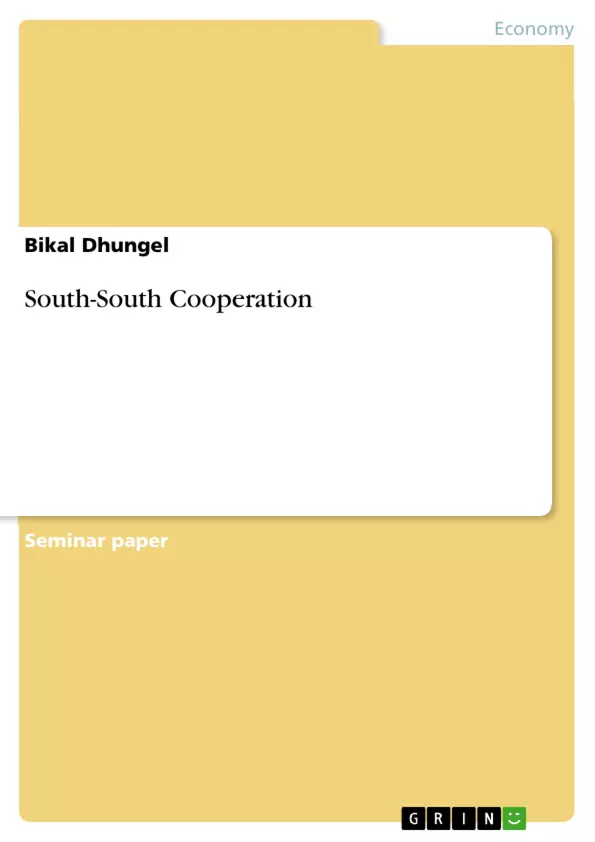The rise of south-south cooperation has added a new perspective in the changing nature of world trade. The emergence of China, India, Brazil and South Africa can result in a changed global industrial setting which could ultimately help to solve the global problem of poverty. The role of South-South cooperation in linking industrial development, the expansion of trade and poverty reduction is not a new subject in international dialog today. ‘In Latin America and the Caribbean, South-South cooperation is a very important mechanism not only to achieve the Millennium Development Goals, but also for a regional development agenda concerned with social inequality and weak institutions, as well as with the fight against poverty’ reports FRIDE, an European think tank for global action. The Third United Nations Conference on the Least Developed Countries, held in Brussels in May 2001, emphasized the importance of South-South cooperation in capacity-building and setting best practices, particularly in the areas of health, education, training, environment, science and technology, trade, investment and transit transport cooperation.
Inhaltsverzeichnis (Table of Contents)
- Introduction
- Rise of the South
- China, India and Sub-Saharan Africa
- Sub-Saharan Africa
- China
- India
- Obstacles and problems
- Climate
- Financial Crisis
- Migration
- Ethnic Nationalism and Conflicts
- Conclusion
- Sources
Zielsetzung und Themenschwerpunkte (Objectives and Key Themes)
This paper analyzes the background and development of South-South cooperation over time. It examines the rising role of Southern nations in international trade, particularly the growing cooperation between Asian giants like China and India and African nations. The paper also explores the challenges facing this cooperation, including climate change, financial crises, migration, and ethnic conflicts.- The rise of South-South cooperation as a new force in global trade.
- The increasing role of China and India in African economic development.
- Obstacles to South-South cooperation, including climate change and ethnic conflicts.
- The potential for South-South cooperation to contribute to poverty reduction and global development.
Zusammenfassung der Kapitel (Chapter Summaries)
Introduction
This chapter introduces the concept of South-South cooperation and its growing significance in the context of the rising economic power of Asian nations and the abundance of natural resources in Africa. It highlights the potential of this cooperation to create a new global economic order that could address the global problem of poverty.Rise of the South
This chapter traces the historical development of South-South cooperation, highlighting its roots in the 1970s and its evolution from focusing on self-reliance to promoting trade and technical capacity building. It also examines the increasing economic power of developing nations, particularly in manufacturing and trade, and how this rise is fueling South-South cooperation.China, India and Sub-Saharan Africa
This chapter explores the growing economic relationship between China, India, and Sub-Saharan Africa. It highlights the abundance of natural resources in Africa, particularly minerals, and the increasing investments and trade activities of China and India in the region. The chapter also examines the role of South-Saharan African countries like South Africa, Sudan, and others in this economic cooperation.Obstacles and problems
This chapter addresses the challenges faced by South-South cooperation. It discusses the impact of climate change, financial crises, migration, and ethnic conflicts on the sustainability of this cooperation. It also highlights the need for technological advancement and resource mobilization to overcome these challenges.- Citation du texte
- Bikal Dhungel (Auteur), 2009, South-South Cooperation, Munich, GRIN Verlag, https://www.grin.com/document/170914



